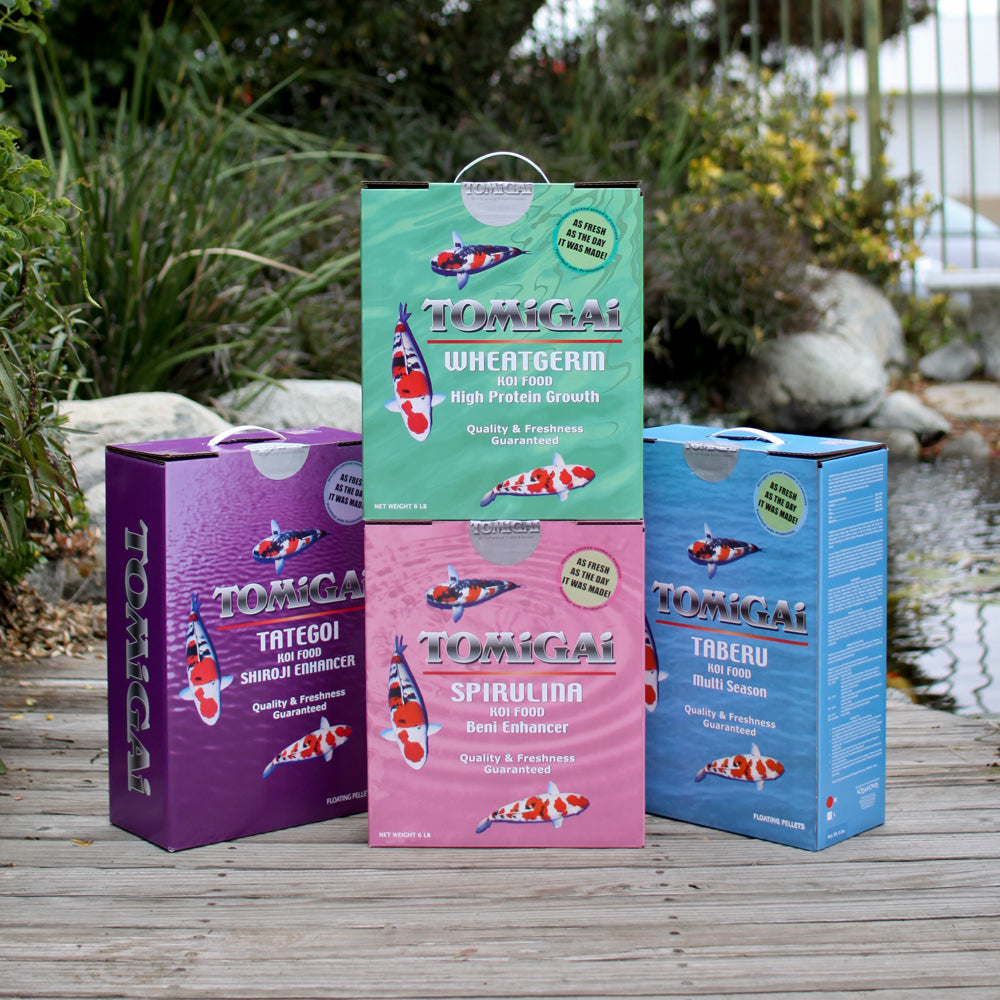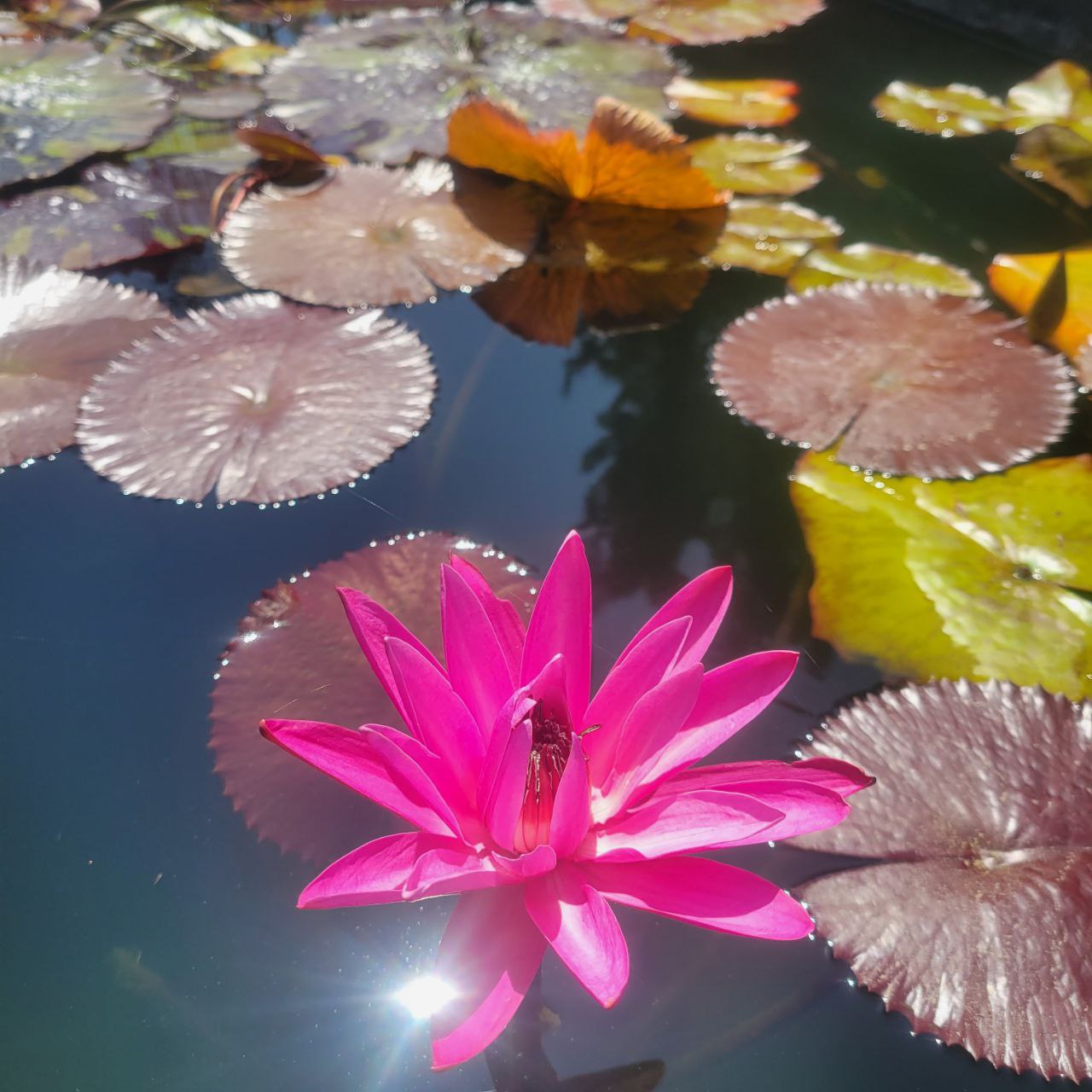
Koi Feeding Guide
Koi Feeding Guide
How should I feed my koi? This is a more complicated question than you’d expect! When feeding your koi, a few factors should be taken into consideration:
1. The koi’s digestive system. Koi do not have stomachs to store large amounts of food. This means that smaller-portioned feedings given more frequently tend to work best with your koi’s digestive tract, and explains why they always seem hungry!
2. The size of your koi. Smaller koi eat smaller portions, while larger koi will need larger food portions to remain healthy.
3. Water temperature. A koi’s metabolism is reliant on the temperature of the water. Cooler temps = changing food to those more suitable for the fall/winter, less feeding, and even fasting your fish if waters fall below 50 degrees Fahrenheit. In warmer temps, koi are more active, grow faster, and are capable of eating anywhere from 2-6+ times per day. A general feeding chart based on water temperature:
50-55F - Once a week, 55-61F - Once per day, 62-65F - Twice per day
66-73F - Three per day, 74-77F - Four times per day, 77F+ - Five or more per day
What is the proper food portion size for my koi? A good rule of thumb is to feed your koi small handfuls at a time for no more than 5-10 minutes. Any additional food that remains uneaten will need removed from the pond to avoid issues with water quality.
Should I install an autofeeder? Autofeeders can be a great way to ensure your koi are getting the proper amount of nutrition, especially for those with busy schedules. However, there are a few pros and cons to think about:
Pros:
- Autofeeders portion sizing and number of feedings can be scheduled
- Many autofeeders can run on solar power
- Can be installed almost anywhere around your pond
Cons:
- Reduces hand-feeding, an important part of developing a relationship with your koi
- Takes eyes off of koi during feedings, which is essential for catching health issues
- Can impact water quality poorly if all food is not consumed
Does koi food quality matter? Definitely! Low-quality fish food is typically made with cheaper, low-quality or filler ingredients, which can not only impact the health of your koi, but also the quality of your pond water. Any ingredients your fish are incapable of absorbing will be released back into your system through their feces.
Are there treats for koi? You can feed your koi snacks like brine shrimp, watermelon, romaine lettuce, grapefruit, and similar foods (that are not high in carbohydrates) in moderation as a yummy treat! A koi’s sense of taste is estimated to be 7x stronger than a humans and treats are a good way to encourage hand feeding.




